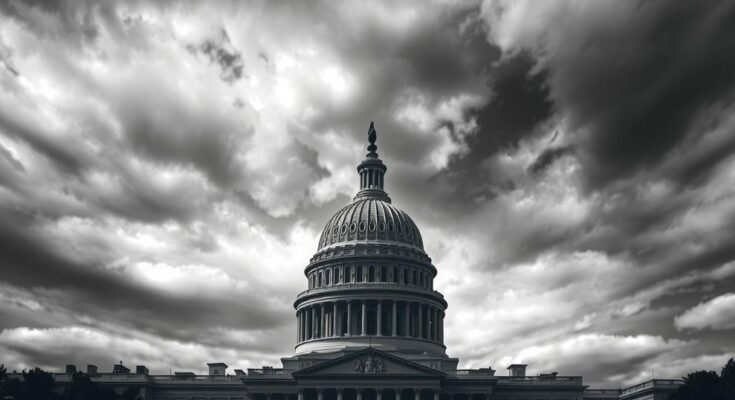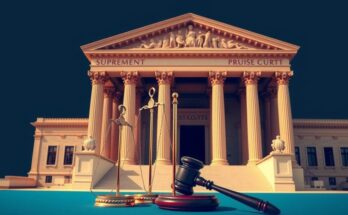This week’s congressional testimony from Federal Reserve Chair Jerome Powell is poised to be especially significant, not only regarding monetary policy but amidst heightened political pressures. The call for lower interest rates is echoing louder from various sectors, particularly from President Donald Trump. Powell’s address on Capitol Hill, scheduled for Tuesday and Wednesday, could reveal much about the Fed’s strategy moving forward as it grapples with economic forecasts and political influences.
Powell Faces Unprecedented Pressure During Testimony
Federal Reserve Chair Jerome Powell is set to testify on Capitol Hill this week, and all eyes are on him. With pressures mounting from various fronts, including President Donald Trump and close White House officials, the chorus is growing for the Fed to slash interest rates. Powell’s semiannual testimony kicks off Tuesday morning when he presents the Fed’s monetary policy report to the House Financial Services Committee before heading to the Senate Banking Committee the following day. This isn’t just routine business; the stakes this time feel unusually high for the Fed.
Political Climate Heightens Anticipation
In the past, these biannual sessions have been a chance for Powell to deliver some general commentary about the economy and share the Fed’s stance. Lawmakers then usually do what they do best—ask questions, likely ones that can sometimes feel a tad aggressive but rarely rip apart the central bank’s credibility. However, this week, there’s a palpable tension, as Trump and several high-ranking officials have ramped up their calls for rate reductions. Adding fuel to the fire are two notable Fed officials, who’ve hinted at their openness to cutting rates as early as July, shaking the usual calm at the Federal Open Market Committee (FOMC).
Market Response Reflects Anticipated Changes
Mohamed El-Erian, chief economic adviser at Allianz, shared insights on CNBC, pointing to an emerging trend of political influence within the FOMC. He indicates that Powell might find it challenging to maintain a unified stance as two Republican-appointed governors, Michelle Bowman and Christopher Waller, have voiced support for a rate cut. Their comments signal a shift in internal dynamics and have certainly piqued Wall Street’s interest, with traders now assigning probabilities to a July rate cut at about 23%, and increasing those odds for September to 82% according to the CME Group’s FedWatch index.
Congressional Showdown Ahead for Powell
The two days Powell spends defending the Fed’s decisions before Congress could indeed become quite contentious. On one side, Trump-aligned Republicans are likely to pester him regarding the delay in easing monetary policy, while on the other, Senator Elizabeth Warren has been beckoning Powell for a cut as well. The diverging pressures from different political factions may undermine Powell’s attempts to assert a consistent narrative. Notably, while Trump has called for aggressive cuts of up to two whole percentage points, Fed insiders like Waller suggest a more tempered approach, indicating they want to ‘start slow’ with gradual reductions.
Risks of Responding to Political Pressures
The crux of the issue isn’t merely the numbers but the potential consequences of rapid cuts. Previous rate reductions from September to December last year saw Treasury yields actually rise, as investors recalibrated their expectations based on anticipation of quicker growth and inflation. Jai Kedia, a research fellow at the libertarian Cato Institute, pointed out that the belief in immediate, effective change as a direct result of Fed action is largely exaggerated. Kedia emphasised that Powell’s focused mission is on maintaining both inflation stability and employment levels, rather than simply catering to the political zeitgeist.
Calls for Independence Amid Republican Pressures
In response to critiques from the White House calling for drastic cuts, Kedia argued that such demands are misplaced. The Federal Reserve is not designed to simply facilitate lower federal borrowing costs; its real responsibility lies in macroeconomic stability. Kedia warned that if the Fed were to become a political tool for presidential whims, it wouldn’t just undermine its effectiveness—it might also jeopardise its credibility in the long run. While Kedia sees some merit in cutting rates, he stressed this shouldn’t be influenced by political pressure but rather should rely on careful economic evaluation.
What will Jerome Powell discuss during his testimony?
Powell is expected to discuss the Fed’s monetary policy and address pressures for cutting interest rates.
What are the expectations for interest rate cuts?
The chances for a rate cut in July are around 23%, with higher odds of 82% for September, according to futures pricing.
Which Fed officials are supporting a rate cut?
Two Fed governors, Michelle Bowman and Christopher Waller, are open to the idea of cutting rates soon, indicating internal support for this direction.
Who is pressuring the Federal Reserve for rate cuts?
The pressure for cuts stems from political figures including President Trump and the administration, complicating Powell’s responsibilities.
Will Powell face tough questions from Congress?
Yes, Powell faces potential confrontations from both parties in Congress regarding the future of monetary policy, which could affect his testimony.




